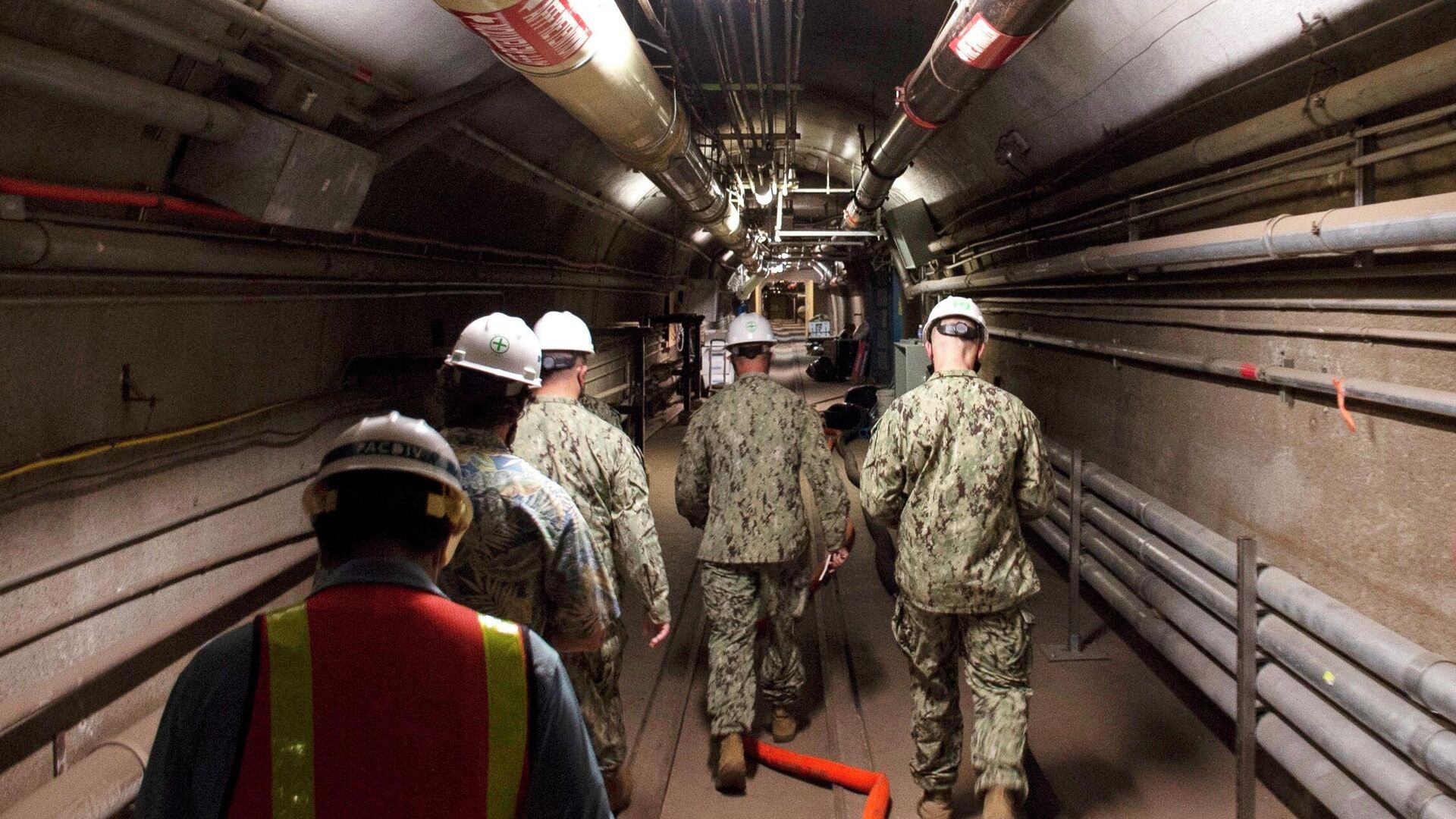‘Culture of Complacency’: US Navy Unlikely to Discipline Force in Jet Fuel Poisoning of Hawaii Water
03:23 GMT 10.07.2022 (Updated: 20:03 GMT 19.10.2022)

© Luke McCall
Subscribe
In March, US Navy officials disclosed that water systems of some 9,715 households were contaminated following a November fuel leak that took the service more than 34 hours to contain. Lawmakers seeking footage of the spill were previously told that the majority of its cameras were inoperable.
The US Navy revealed to reporters that it is looking into how the media obtained highly sought-after footage and photos of the November 20 fuel spill at Red Hill Bulk Fuel Storage Facility in Hawaii. However, the service has also indicated it’s unlikely disciplinary actions will be taken.
Footage obtained by Civil Beat shows fuel flooding the storage complex floor after being struck by a worker’s train cart. The fuel would continue to roar from the pipes for over 34 hours, eventually trickling down into the drinking water of military families and others near Red Hill.
The service will be looking into “accountability actions” in response to the findings of the informal investigation, an unnamed Navy official told the Honolulu Star-Advertiser earlier this week.
The leak occurred about 380 feet (116 meters) from the drinking water source.
Despite knowledge of the leak’s proximity to the residents’ drinking water, US military officials told locals that their drinking water was safe. These assurances persisted through the Hawaii Department of Health’s ‘Do Not Drink’ advisory on November 29.
This happened on a Saturday.
— Christina Jedra (@ChristinaJedra) July 5, 2022
On Monday, the Navy was still telling families the water was safe to drink.
To this day, they have announced zero disciplinary actions for this disaster. pic.twitter.com/q0oOL5xQqs
Military families and other area residents experienced prevalent symptoms of exposure to petroleum hydrocarbons–many of which were localized in the nervous and gastrointestinal systems, according to a CDC survey that ran from January 7 and February 10.
Of the 2,289 respondents, at least 853 (37%) sought medical care, and 17 were hospitalized overnight.
Another image obtained by Civil Beat showed that a cracked PVC pipe was installed in an area that initially called for steel.
My source also shared a photo of the damaged PVC pipe, which makes plain why military investigators found the pipeline was supposed to be made of steel, not PVC.
— Christina Jedra (@ChristinaJedra) July 5, 2022
PVC can crack.
The contract order was for steel, but the contractor installed PVC and the military OKed it. pic.twitter.com/ZlHvLTNqeX
The service noted it is unlikely that any individual service member will be held accountable or face disciplinary action as a result of the informal investigation.
Rep. Kai Kahele (D-HI) and a litany of others have previously asked the US Navy to produce footage from the November 20 incident, but officials have claimed cameras in the relevant area were inoperable. The footage obtained by the media was recorded on a worker’s mobile device.
An investigative report conducted by Rear Admiral Christopher Cavanaugh found “there was a culture of disregarding procedures, poor training and supervision, ineffective command, a lack of ownership over operational safety, a lack of timely, accurate and thorough reporting,” and other issues at Red Hill.
Cavanaugh’s report was dated January 2022, but not released until the graveyard hours of June 30.
Navy officials did not disclose the correct figures associated with the incident, according to the report, detailing that 16,999 gallons–not 14,000 gallons–of jet fuel spewed from the pipeline at “full blast.”
“The lack of critical thinking, intellectual rigor and self-assessment by key leaders at decisive moments exemplified a culture of complacency and demonstrated a lack of professionalism that is demanded by the high consequence nature of fuel operations,” read the scathing report.

